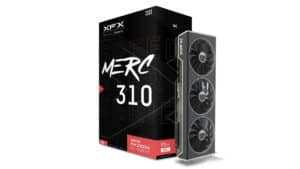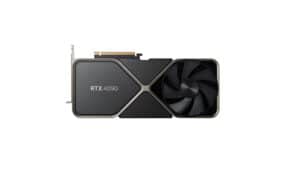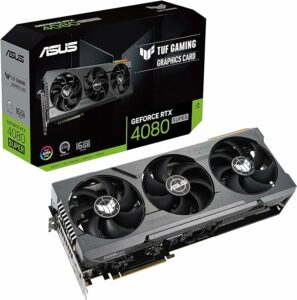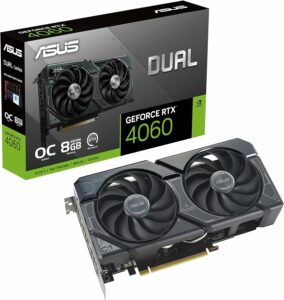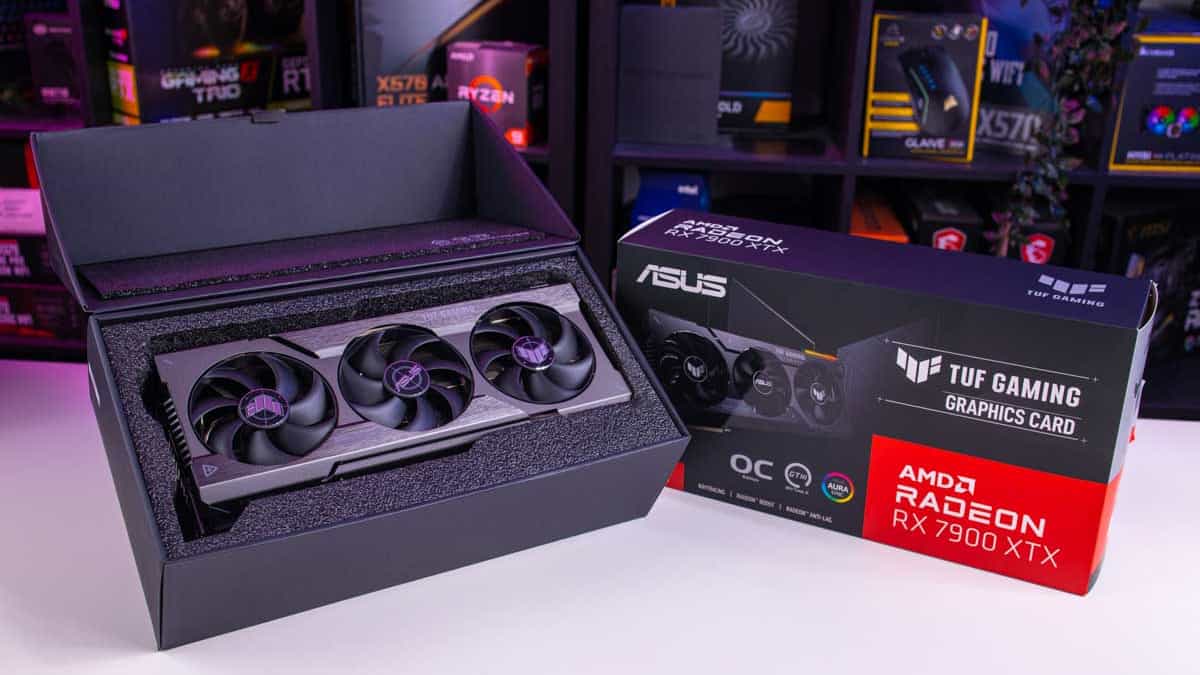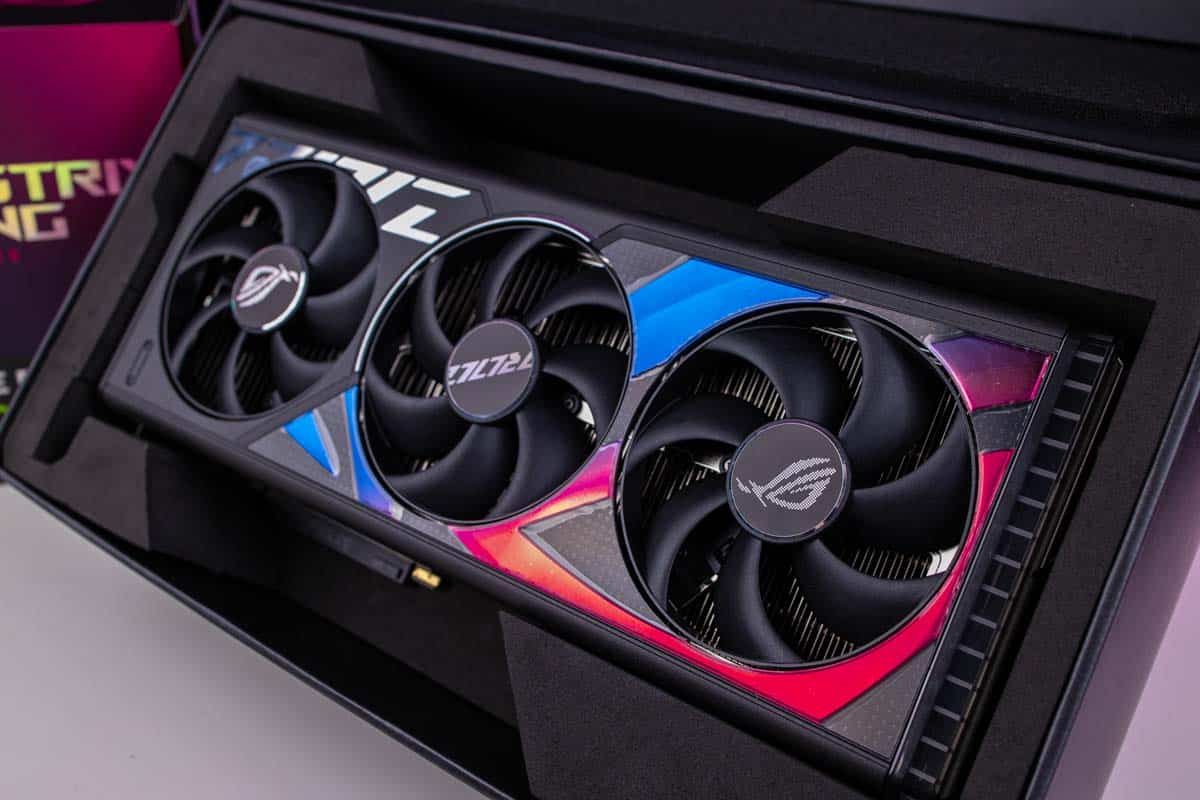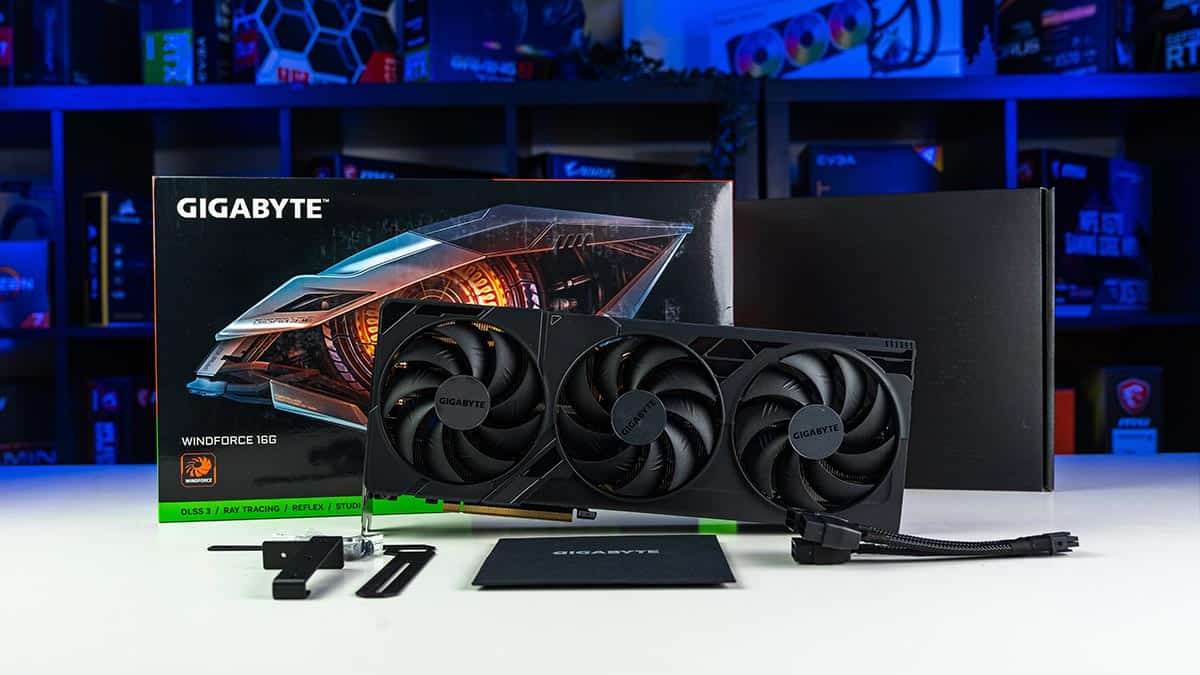Best GPUs for Windows 11 – our top picks
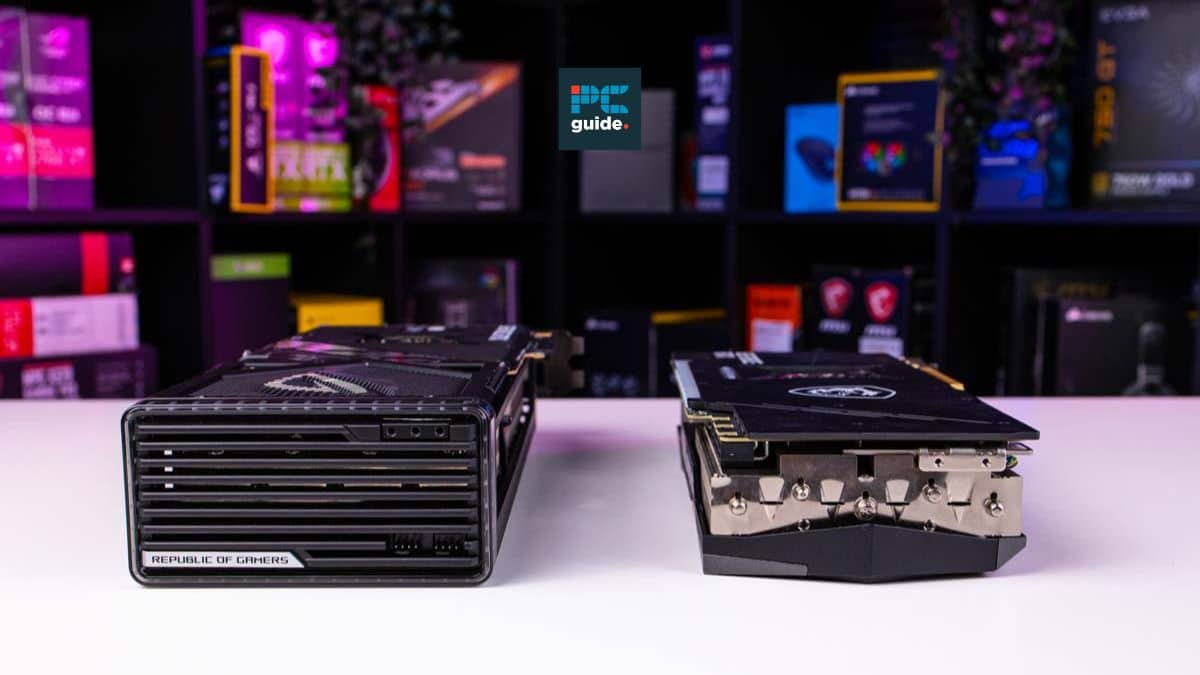
Table of Contents
Games and applications aren’t the only things to have received some incredible advancements over the years; operating systems are up there with some of the most rapidly developing software. Since its first release in 1985 right up to the present day, Windows has been at the forefront of the operating system world, and as its most recent version, Windows 11 can be considered the crème de la crème of OS. So, let’s jump straight into the best GPUs for Windows 11.
It’s essential to have one of the best graphics cards that not only keeps up with the demands of modern gaming and content creation but also ensures seamless compatibility with the latest operating systems. Although Windows 11 can run on a wide range of GPUs, investing in the right one will significantly improve your rig’s performance, allowing you to make the most out of your experience for gaming, productivity, and any task you decide to throw at it. In this article, we’ll be exploring the ideal graphics cards to pair with Windows 11, capable of handling everything from everyday tasks to high-end gaming and professional applications with ease. So, sit back and let us guide you toward the ideal GPU to unlock the full potential of Windows 11.
Products at a Glance
How we picked the best GPU for Windows 11
Alright, let’s talk about finding the perfect GPU for Windows 11 without getting too technical. Although Windows 11 can run on a wide range of GPUs, you’ll want to choose one that offers solid performance for a smooth experience throughout. First up, make sure the GPU you’re eyeing is compatible with Windows 11 and your current hardware, like your motherboard and power supply – nobody wants to buy a shiny new GPU only to find out it doesn’t work with their setup. Graphics card-wise, the Windows 11 system requirements aren’t too demanding, only requiring a model that’s compatible with DirectX 12 or later with WDDM 2.0 driver. Luckily, as long as you choose a card that’s come out in the last couple of years, you can be fairly confident that not only will you have DirectX 12 compatibility, but you’ll be future-proofed for a good few more updates, and possibly even Windows 12 when we eventually get it. There are also a few shortcuts to run through to double-check what your current GPU supports, which we’ll run through later in our Features and Considerations section.
Now, think about what you’ll be using your PC for; Gaming? Video editing? 3D rendering? Different GPUs have their strengths and weaknesses, so we’ve made sure to choose a lineup of cards that cater to the needs of a range of audiences. On the whole, to improve your experience with the Windows 11 interface, you’re going to want to look specifically at the factors that impact GPU speed and processing power. This includes the amount and type of VRAM, memory bandwidth and speed of data access, and the usual things such as CUDA Cores or Stream Processors that give you higher frame rates and resolutions. These core functions need to be balanced with additional features such as efficient cooling, especially if you’re keen on overclocking, and and power consumption. Last, but not least, think about the price. Sure, high-end GPUs are awesome, but they might not be the best value for money. Find a GPU that strikes the right balance between performance, features, and price to keep your wallet happy.
What’s more, we think that the most important element contributing to how we picked is the fact that we’ve gone above and beyond to choose cards that we have reviewed in-house. We used a combination of market research and hands-on experience, putting each card to the test in terms of key specs, benchmark performance, and pricing to make sure you’re choosing a GPU you can rely on not just for Windows 11, but any interface you might want to try. For the full details, you can read our RX 7900 XT review, RTX 4090 review, RTX 4080 Super review, and lastly, our RTX 4060 review.
Product Reviews
- The fasted AMD GPU, with a boost clock speed of 2535 MHz
- 20GB of VRAM is more than enough for both gaming and productivity
- Elegant and classy design that will look great in any work station or gaming PC
- Weak Ray tracing and DLSS compared to Nvidia alternatives
- Users looking for power will want to go for the XTX model
- Has the slightly slower GDDR6 memory
The AMD Radeon RX 7900 XT is a top-tier GPU that strikes the perfect balance between performance and versatility, making it an ideal choice for the gamers and content creators who use Windows 11 as their OS of choice. Built on the cutting-edge RDNA 3 architecture, this graphics card features 84 compute units and 5,376 shading units, which means it can deliver stunning visuals and smooth frame rates in even the most demanding games and applications, so for your everyday interface use you can have high expectations.
One of the key features of the RX 7900 XT is its 84-ray accelerators, which enable real-time ray tracing for incredibly realistic lighting and reflections. This GPU is manufactured using a combination of TSMC’s 5nm (GCD) and 6nm (MCD) process technologies, ensuring great efficiency and performance across general use, working, and gaming across your PC. Additionally, with a game clock speed of 2000 MHz and a boost clock speed of 2400 MHz, the RX 7900 XT is more than capable of handling high-resolution gaming and complex professional workloads. Its 20GB GDDR6 memory and impressive memory bandwidth of 800 GB/s allow it to tackle large textures and detailed 3D models with ease. Essentially, you’ve got a really versatile card that’s well qualified for gaming and productivity, that’s futureproofed as one of AMD’s current bests, only lacking in comparison to the more powerful 7900 XTX.
Despite its powerful performance, the RX 7900 XT has a relatively modest TDP of 335W, making it an energy-efficient choice for users who want top-notch performance without a massive power draw. So, in terms of modest graphics cards that would make an excellent workstation GPU, the RX 7900 XT is certainly up there. That being said, performance costs, so choosing this option won’t be very affordable, but every penny will be worth it if you choose to take this route. Its price of $800 might still be a little steep, but you’ll be saving a lot in comparison to Nvidia’s flagship, the RTX 4090.
- Ada architecture, 3rd-gen DLSS, and ray tracing are a winning combination
- Fastest GPU currently available, with 16,384 CUDA Cores that give it 8K potential
- As the top consumer GPU, you'll be future-proofed for many years to come
- Doesn't come cheap; price exceeds $2000, so it's not exactly affordable
- High performance also comes with a high power draw of 450W TDP
- It's also a massive and heavy card weighing 9.53 pounds - you'll need to clear up some space for it
Without a shadow of a doubt, the NVIDIA GeForce RTX 4090 will run Windows 11 easily. Besides, this is a high-end GPU that’s perfect for demanding gamers and content creators who need top-tier performance. Based on the Ada Lovelace AD102 architecture, this graphics card boasts an impressive 16,384 CUDA cores, which means it can handle even the most graphics-intensive tasks with ease, and that’s just part of why we awarded it 4.5/5 stars in our review – the highest score we’ve given a GPU.
Sporting 24GB of GDDR6X VRAM on a 384-bit memory interface, the RTX 4090 offers a substantial memory capacity that’s perfect for handling large textures and complex 3D models, and makes the card more than capable of gliding through any operating system’s interface. That’s not all; the base clock speed of the RTX 4090 is 2235 MHz, and it can boost up to 2520 MHz, allowing it to deliver exceptional frame rates in games and ensuring smooth performance in professional applications. This was demonstrated in our in-house benchmarks, where the GPU blasted through demanding titles such as Cyberpunk 2077 averaging 74 FPS at 4K. Synthetic benchmarks didn’t disappoint either, with the likes of 3DMark and Blender scoring highly across the board.
There are only two caveats when it comes to the 4090, namely its power draw and pricing. Thanks to its 5nm TSMC process technology, this GPU achieves impressive efficiency and performance gains, but it’s significantly power-hungry: it’s got a TDP of 450W, meaning you need a PSU of at least 1000W. This powerhouse GPU does demand a lot of power, but its performance more than justifies the energy consumption. It’s also quite the investment, with an MSRP of $1599 that can vary up to $2000 depending on the model. We’ve chosen a Founder’s Edition, as it comes it at bang on the guide selling price, and looks visually very similar to the Founder’s Edition of the RTX 3090. The RTX 4090 might be a significant investment, but for those seeking the best of the best, this GPU is well worth the price. It’s a high-performing all-rounder for any OS, with data transfer speeds and memory which mean it’s very good at performing general purpose computing as well as graphics.
- Excellent price-to-performance ratio - whopping boost clock of 2.63 GHz
- Improved performance over the original 4080, and better value
- More efficient power consumption than the 4090 with a TDP of 320W
- Still comes at a pretty high price point of above $1000
- Not as readily available as some of the other high end 40-series cards
- Paying nearly as much as a 4090 without the halo performance
If gaming is your primary focus when searching for the best GPUs for Windows 11, then look no further than the NVIDIA GeForce RTX 4080 Super. This graphics card is specifically designed to deliver the ultimate gaming experience, with an emphasis on high frame rates and stunning visual fidelity. The Super series refresh of the RTX 4080 came out in January of 2025, giving the top end of the 40 series a boost in terms of specs and performance, and for Windows 11, the 4080 Super provides an excellent – and cheaper – alternative to the RTX 4090.
As mentioned above, the 4080 Super makes a couple of internal improvements over the original RTX 4080 model, including an increase in CUDA cores to 10,240 from 9,728 (5% upgrade), and 320 texture mapping units (TMUs) from 304. You’re still benefitting from the AD103 GPU with 16GB GDDR6X VRAM, but you’re getting real-world performance gains of about 2-5%. Other improvements include a stellar boost clock speed of 2550 MHz, one of the fastest clock speeds available, which combines with its other features and architecture to give Windows 11 users 8k-quality gaming, 3D rendering, game development and programming, and everything in between. It’s also more efficient than alternatives such as the 4090, with a more moderate TDP of 320W, meaning it won’t be such a strain on your system.
Looks-wise, ASUS TUF reliably pulls through with its approach to design and build quality. Its simple yet militaristic design is primed for efficient cooling, with a metal exoskeleton and dual ball-bearing fans to improve heat dissipation. Its price by no means places the 4080 Super on the list of the best budget graphics cards, but it stands tall as Nvidia’s attempt to bring you an Ada card with all the bells and whistles for a more affordable price.
- It's a far more affordable option for office work
- Far less power hungry than others with a TDP of just 115W
- Solid card for 1080p and 1440p gaming and multi-tasking at a good price point
- Hardware lacks in comparison to the high-end 40 series
- Not suitable for high-end gaming, and might struggle in demanding 1440p environments
- Weakest of the current-generation Ada GPU lineup
For those who need a solid GPU for office work and productivity tasks, the NVIDIA RTX 4060 is an excellent choice. It offers a balance between performance, power efficiency, and affordability, making it perfect for your everyday computing needs without breaking the bank. Coming in as a 3.5/5 stars in our RTX 4060 review, the specs of the 4060 are far more humble than the previous cards on this list, but it will by no means disappoint light gamers, creators, or the everyday user. It’s at the lower end of the current Ada lineup, built on the AD107 die, and features 8GB GDDR6 VRAM on a 128-bit memory bus. Other internal specs include a total of 3,072 CUDA cores with 96 TMUs and 48 ROPs. With a smaller form factor and light 115W power draw, the RTX 4060 is positioned as an ideal choice for the Windows 11 user who’s got a smaller PC case or a smaller budget, and is ideal for office environments where noise and temperature control are essential.
To put it short, you’ve got an efficient card that’s primed for being used as 1080p, that will sail through your Windows 11 interface and daily computing needs without demanding too much from your machine – or wallet. It provides enough power for multitasking, web browsing, and running productivity applications smoothly, and who’s to say it’s not future-proof? The benefit of 40-series Ada cards is that they make use of 4th Generation Tensor Cores, meaning their performance for AI-based applications and software is really strong. This is an important consideration if you’re planning to use Microsoft’s Copilot AI suite, or any of the popular productivity AI tools that can be found on the modern computer.
Features and considerations
When we set out to find the best GPUs for Windows 11, we wanted to make sure we were thorough and considered all the important factors. We started by ensuring the GPUs we looked at were compatible with Windows 11’s requirements because no one wants a graphics card that won’t work with their OS. As mentioned earlier, the requirements for graphics cards include DirectX 12 or later with WDDM 2.0 driver. Luckily, Windows has a handy diagnostic tool that allows you to find out what version of DirectX you currently have on your PC called the DirectX Diagnostic Tool, which will help you to establish if you need to download DirectX 12.
So, once you’re sure you’re all set with DirectX 12 downloaded, the next thing to consider is how to best optimise the rest of your system alongside your graphics card to truly experience Windows 11 at its best. As the top-tier operating system, our picks highlighted the extremes of GPU power as we looked at the high and low ends of the 40 series. The 4090 has some of the highest specs offered with its 16,384 CUDA cores and boost clock of 2,640 MHz, whereas the 4060 has just 3,072 CUDA cores with 96 TMUs and 48 ROP. Of course, the more powerful the GPU the faster it can render and process complex graphics and visual effects, but what’s more important is pairing your components with similarly matched hardware. Your first port of call might be to check out the best CPUs for Windows 11, which can provide a strong starting point, but we might suggest also looking at GPU specific recommendations, as you’ll need quite drastically different CPUs for the 4090 and the 4060 if you want to prevent bottlenecking and enhance performance. We’ve got you covered with our picks of the best CPU for the RTX 4090, and the best CPU for the 4060 too.
How much RAM is recommended for Windows 11?
Anything beyond 4GB is fine for Windows 11, but depending on what else you might be doing with the rig, like video editing or gaming, you may want to get a bit more RAM. A good amount of RAM would be either 16GB or 32GB.
Our Verdict
In conclusion, finding the best GPUs for Windows 11 is essential for getting the most out of your computing experience. Whether you’re a gamer, content creator, or someone who just needs a reliable GPU for everyday office tasks, there’s a suitable option for you. We’ve carefully selected the top four GPUs, including the AMD Radeon RX 7900 XT for overall performance, the NVIDIA RTX 4090 for high-end users, the NVIDIA RTX 4080 Super for gaming enthusiasts, and finally the RTX 4060 for office work or more casual users. Each of these GPUs offers excellent performance and features tailored to their specific use cases. By choosing the right GPU for your needs, you can enjoy a seamless and powerful Windows 11 experience while maximizing your system’s potential.


